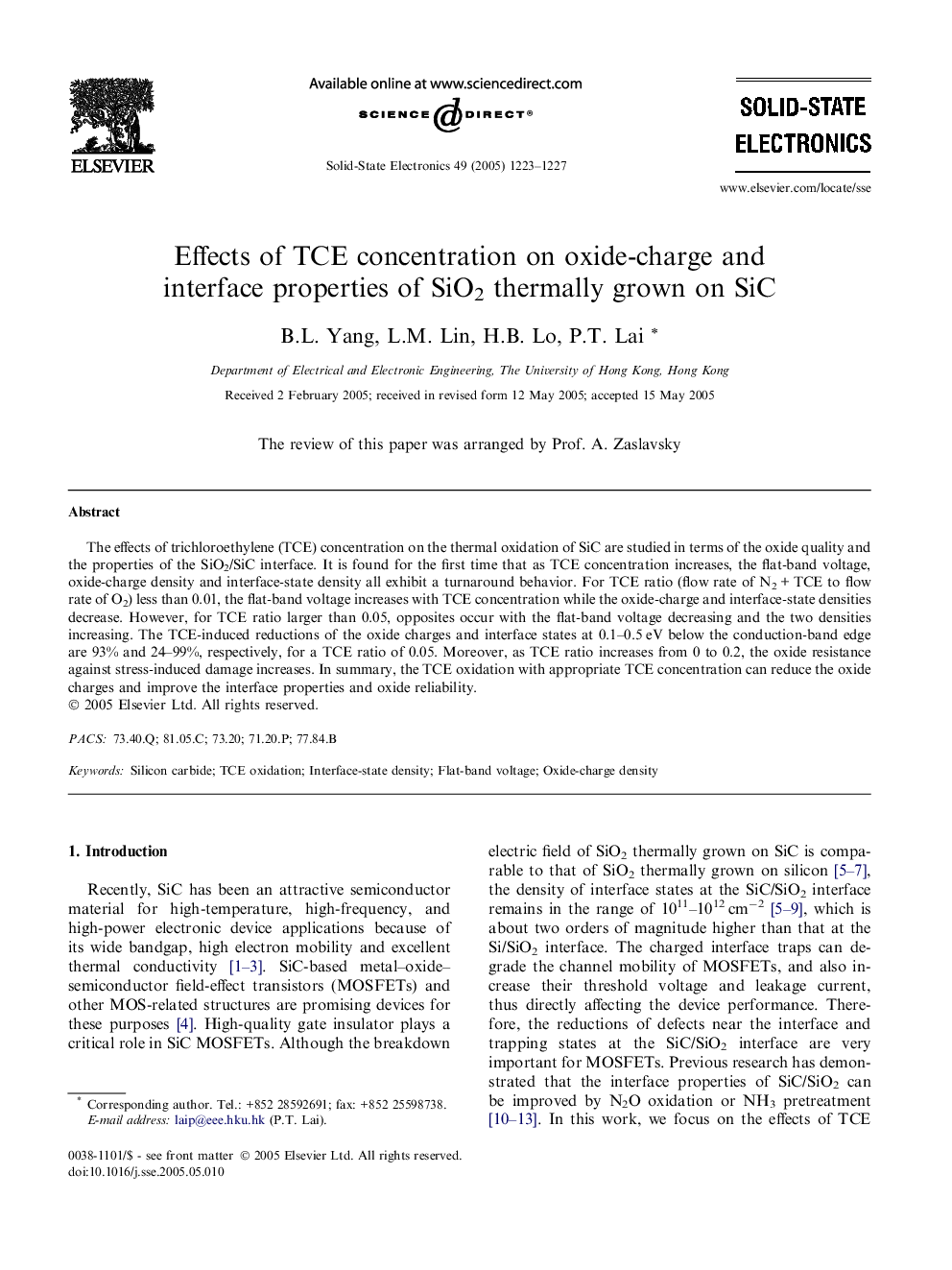| Article ID | Journal | Published Year | Pages | File Type |
|---|---|---|---|---|
| 10411726 | Solid-State Electronics | 2005 | 5 Pages |
Abstract
The effects of trichloroethylene (TCE) concentration on the thermal oxidation of SiC are studied in terms of the oxide quality and the properties of the SiO2/SiC interface. It is found for the first time that as TCE concentration increases, the flat-band voltage, oxide-charge density and interface-state density all exhibit a turnaround behavior. For TCE ratio (flow rate of N2Â +Â TCE to flow rate of O2) less than 0.01, the flat-band voltage increases with TCE concentration while the oxide-charge and interface-state densities decrease. However, for TCE ratio larger than 0.05, opposites occur with the flat-band voltage decreasing and the two densities increasing. The TCE-induced reductions of the oxide charges and interface states at 0.1-0.5Â eV below the conduction-band edge are 93% and 24-99%, respectively, for a TCE ratio of 0.05. Moreover, as TCE ratio increases from 0 to 0.2, the oxide resistance against stress-induced damage increases. In summary, the TCE oxidation with appropriate TCE concentration can reduce the oxide charges and improve the interface properties and oxide reliability.
Related Topics
Physical Sciences and Engineering
Engineering
Electrical and Electronic Engineering
Authors
B.L. Yang, L.M. Lin, H.B. Lo, P.T. Lai,
